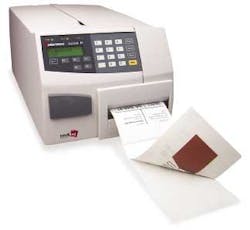RFID tracking brings new challenges to logistics
NATICK, Mass. - The promise of radio-frequency identification (RFID) is that an organization can mark every item in its supply chain with a tiny electrical beacon, and automatically track it from factory to warehouse to retail shelf.
Large businesses such as Wal-Mart, Gillette, and the U.S. Department of Defense are doing it already.
The system has been proven in closed-loop logistics pools, but the challenge can be too much for open supply chains. In practice, RFID tracking can overwhelm a company’s computers with a flood of new data.
In the past 18 months, this problem has sparked new applications for RFID middleware, which is software that filters, aggregates, and routes the RFID data, according to a new report from maket researcher Venture Development Corp. (VDC), in Natick, Mass.
This middleware can act as a traffic cop to control the flood of RFID data, but it still represents a small fraction of the industry.
“The focus on hardware is important but RFID hardware is of minimal value without effective software tools that can aggregate data from readers and pass it to enterprise systems,” said Michael J. Liard, RFID research program director for VDC.
The global market for RFID middleware will reach $16.4 million in 2004, $43 million in 2005, and $135 million ion 2007, according to VDC estimates. By comparison, the market for RFID hardware such as readers and transponders will be $1 billion in 2004 and $2.9 billion in 2007.
And the entire market for RFID systems is projected to rise from $1.5 billion this year to $4.7 billion in 2007.
Those numbers are rising quickly because companies are finding ways to make a profit with RFID. Organizations that require their suppliers to use RFID include the U.S. Food and Drug Administration (FDA) and retailers Target, Tesco, Metro, and Albertson’s. Companies launching pilot projects with RFID include Delta Airlines, Prada, and Marks & Spencer.
All these organizations face the same challenge - a supply chain stocked with RFID can generate huge amounts of data. So they use middleware to move data to the point of transaction, Liard said.
A middleware application extracts data from the RFID reader, filters it, aggregates the information, and routes the data to an enterprise resource-planning type of system.
Most RFID products today are built to accept the standards developed by EPCGlobal Inc. in Lawrenceville, N.J., a private sector organization that supports interoperability standards. However these “Savant specifications” are not yet the sole standard for RFID data exchange, the VDC report states.
In fact, the best middleware does not stop with RFID, but can interface with other automatic identification technologies, such as barcode, global positioning system (GPS), satellite, and other sensors.
Once it collects the data, RFID middleware performs at least one of three tasks: data monitoring and management, device monitoring and management, and application development tools. Companies use the middleware to capture and store data until they record it in a database, and to link many applications to a shared resource using a single interface.

